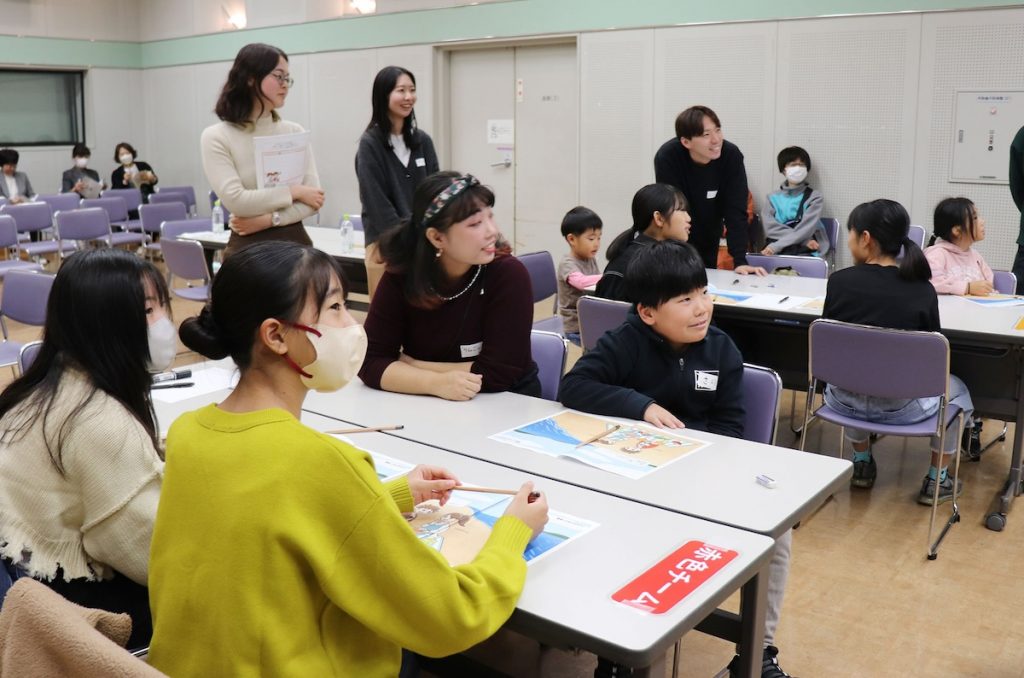
Children try to guess the amount of salt in food at a workshop on reducing salt in the diet. (©JAPAN Forward by Mika Sugiura)
Read the full story on Japan 2 Earth - Strategic Initiative on Sustainable Food Tackles Japan's High Salt Intake
A recent seminar for children raised an important health issue – reducing salt intake. The event was organized by the Strategic Initiative for a Healthy and Sustainable Food Environment. The initiative aims to extend healthy lifespans in the "100-years of life era."
Teaching Salt Reduction to Children
"Curry rice, fried chicken, or rice. Which of these foods has the most salt?"
Elementary school students ponder over a question posed by Associate Professor Tomomi Kobayashi of the Department of Food Sciences and Nutrition at Mukogawa Women's University.
The session was part of the "Have Fun Learning about Salt Reduction Workshop" organized by the Ministry of Health, Labour and Welfare (MHLW) in Osaka's Chuo Ward in November 2023. Part of the Strategic Initiative for a Healthy and Sustainable Food Environment, the workshop targeted elementary school-aged children. It was the first of its kind organized for children under the initiative.

All the children answered correctly. Curry rice contains the most salt, followed by fried chicken, and then rice.
The children struggled over the next question. They were asked to estimate salt content using small 0.3-gram packets of salt. The curry rice, which contains 3.7 grams of salt, had 12 packets. One hundred grams of fried chicken got 4 packets (1.3 grams), while rice had zero.
One precocious child placed a salt packet on the rice and exclaimed, "Onigiri [rice balls] bought from convenience stores have salt!" eliciting laughter from all.
Salt Intake – a Tricky Problem to Solve
Then came a question that stumped everyone. "How can we eat our meals and stay within the daily salt intake target?"
Continue reading the full story on Japan 2 Earth to learn more about how the initiative is promoting public-private cooperation to address an important health issue.
And find more great articles on the environment and the challenges of achieving the SDGs on our affiliated website Japan 2 Earth (J2E), sparking a transition to a sustainable future.
RELATED:
- Asian Young Dietitian Network Launches in Japan
- Glico Promotes World Diabetes Day on Famous Dotonbori Billboard
(Read the article in Japanese.)
Author: Mika Sugiura









